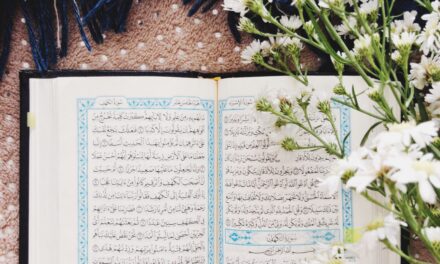The Mu‘tazilee scholars interpreted the Qur’an in such a way as to support and defend their unique and unorthodox ideas which had never before been expressed by the early scholars among the sahaabah, the taabi‘oon, or their students. Many of their early tafseers, like those of orthodox scholars, were lost in time and we only know about them from references made to them by their contemporaries.
Their method of tafseer is considered tafseer bid-diraayah of the worst kind. Such tafseers are noted for their total disregard for the opinions of the early mufassirs, as well as their complete dismissal of classical lexical meanings. The following are brief reviews of Mu‘tazilee-oriented tafseers which have survived until today:
1.Tafseer ‘Abdul-Jabbaar al-Hamdaanee, Tanzeeh al-Qur’aan ‘an al- Mataa‘in.
‘Abdul-Jabbaar ibn Ahmad al-Hamdaanee (d. 1024 CE/ 415 AH), a major Mu‘tazilee scholar of his time, was appointed judge of the city of Rayy, where he lectured until he died. He authored books in usool al-fiqh and other Islaamic sciences, as well as a highly acclaimed historical work called Dalaa’il an- Nuboowah (Proofs of the Prophethood).
His tafseer is not a complete explanation of the Qur’aan, as only the controversial and equivocal verses are interpreted in order to refute the position of Sunnee scholars. The tafseer begins with Soorah al- Faatihah (1) and ends with Soorah an-Naas (114); however, many chapters and verses remain unexplained. The book is organized around certain issues whereby a problem is presented and its solution proposed.
2.Tafseer ash-Shareef al-Murtadaa, Gharar al-Fawaa’id wa Durar al-Qabaa’id
‘Alee ibn at-Taahir, Aboo Ahmad al-Husayn (966-1048 CE/355-439 AH) traces his ancestry back to the Shee‘ah Imaam Moosaa al-Kaathim, the son of Ja‘far as-Saadiq. He was the main scholar of the Shee‘ah in ‘Iraaq and an adamant follower of the Mu‘tazilee school of thought. The book of sayings attributed to ‘Alee ibn Abee Taalib, Nahj al-Balaaghah, was written either by him or by his brother, Shareef Ridaa. Shareef Murtadaa’s tafseer contains lectures which he dictated in eighty lessons, covering studies in tafseer, hadeeth,and literature.
Hence, this tafseer was nicknamed “ Amaalee ash-Shareef al-Murtadaa” (The Dictations of Shareef Murtadaa). The tafseer section of the book does not explain all of the Qur’aan, but instead interprets selected passages in such a way as to establish the fundamental principles of the Mu‘tazilees. The author also skillfully takes certain verses which obviously contradict some of the Mu‘tazilee fundamentals and neutralizes them with unorthodox linguistic explanations. In fact, the whole tafseer has a heavily linguistic, analytical slant.
3.Tafseer az-Zamakhsharee, al-Kash-shaaf ‘an Haqaa’iq at-Tanzeel
Mahmood ibn ‘Umar az-Zamakhsharee al-Khwaarazmee (1075-1144 CE/467-538 AH) was a Hanafee scholar who studied in Baghdaad and Khurasaan and wrote a number of books on Arabic literature and grammar, usool al-fiqh, hadeeth commentary, etc. Despite az-Zamakhsharee’s blatant Mu‘tazilee leanings, his tafseer is considered a literary masterpiece.
His explanations of the various miraculous aspects of the Qur’aan were the most detailed and extensive written, and his discussions of the beauty of Qur’aanic rhyme, rhythm, and eloquence the most comprehensive. Az-Zamakhsharee uses his mastery of the Arabic language to interpret the Qur’aan according to Mu‘tazilee thought. Verses which conflict with his fundamentals are made allegorical and reinterpreted. His handling of legal issues is brief and unbiased, and he rarely uses Israa’eeleeyaat.







Recent Comments